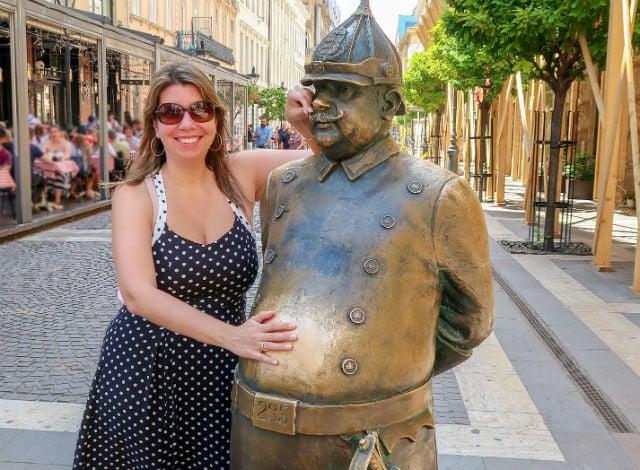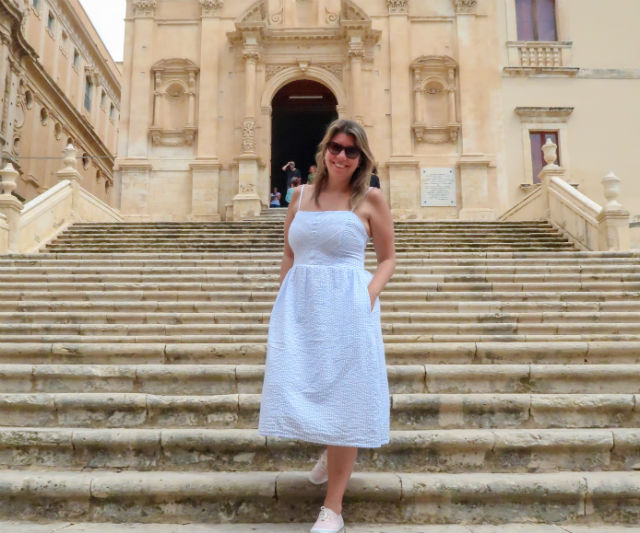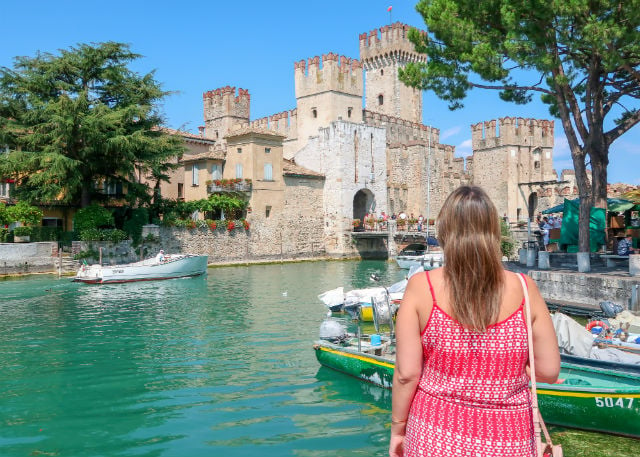Feel like your day job is thwarting your travel plans? Keep telling yourself you don’t have the time (or cash) to take a trip? Where there’s a will, there’s a way, says travel aficionado Alline Waldhelm.
“It’s really a mindset. I love to do it and, on average, I travel somewhere once a month. In the summer, I fly every single weekend.”
Alline, who is originally from Brazil, caught the travel bug when she first visited Germany 12 years ago. It’s a trip that changed her life; she resolved to live in Europe one day and sure enough returned several years later to study in Munich before settling in Vienna.
“I always really liked traveling to Europe. When I was living in Brazil, I managed to come four times before moving to Munich to study German,” she tells The Local.
Browse Lufthansa’s business class offers
 Photo: Alline in Budapest last year
Photo: Alline in Budapest last year
Although she works full time as a financial analyst, Alline doesn’t let her job get in the way of her adventures. In Austria, she explains, overtime is discouraged so it gives her plenty of time and the flexibility to take a flight on a Friday evening and return on the Sunday night.
“It’s actually really manageable,” she says. “For me, it’s so important to have these breaks. Of course, you don’t disconnect from your life in two or three days but that’s not the point. There’s so much to explore; you might be physically tired but it’s a mental break and you go back to the office on Monday with a lighter mood.”
While she reserves the bulk of her annual leave for travelling back to Brazil, she still takes a couple of weeks over summer to plan a longer trip. This year, she’s heading to Costa Smeralda in Sardinia – “The beaches are unbelievable and I want to explore more parts of the La Maddalena archipelago” – before spending a week in the south of Portugal which she describes as “full of history and culture, welcoming people and delicious food.”
 Photo: Alline in Sicily during summer 2018
Photo: Alline in Sicily during summer 2018
Where to find travel inspiration
When looking for new places to travel, Alline often turns to her most trusted resource: her friends and ex-classmates who are scattered across Europe. Or, if there’s a specific city or country that she is keen to visit, she’ll follow news sites like The Local or Time Out to keep up with local events. She’s also an active member of Facebook groups like European Travellers #WhereToNext? that are dedicated to travel tips and inspiration.
Search for your business class trip now
When Alline is feeling really adventurous she’ll use a feature like Skyscanner’s ‘Everywhere’ search to find the best deals on cheap flights. It’s how she stumbled on a great return flight to Larnaca, a pretty port city in southern Cyprus, last Christmas. Often, she starts with the destination, whether it’s a recommendation or her own find, and then pads out the trip once she’s booked.
She believes it’s still possible to ‘get off the beaten track’ even if you only have a couple of days to explore. In her experience, the best way to do this is to not plan too rigidly. Instead, pick a couple of things you really want to see or do and then play the rest of the trip by ear.
 Photo: Alline in Lake Garda
Photo: Alline in Lake Garda
“I try to be spontaneous. I really enjoy arriving in a city and just walking around and seeing what people are doing. I don’t plan every minute because usually you can meet someone and they suggest something to do. Leaving your time open means you may run into something more interesting or discover something different along the way.”
The best advice she can offer full-time workers who are keen to travel more is to think logistically when booking flights and hotels. For short weekend trips, Alline mostly sticks to Europe and limits flight time to under a couple of hours so that the journey itself doesn’t eat too much into her precious exploring time.
The same goes once she’s touched down at her destination.
“Take London, for example, there are five airports and some of them it takes hours to get from the airport to the city centre. So I always find the airport that is closest. If it’s a small saving but it means I I lose an hour getting to the hotel, that’s something I won’t do.”
Alline adds that although you may be able to find a nicer hotel further out of the city “it’s not doable” when you only have a couple of days. Instead, she advises staying somewhere that may not be as plush but is more conveniently located. This way, you won’t “lose time, which is very precious on a short trip”.
Finally, she says: “Always be half ready to travel”. Alline always keeps a bag packed with the essentials like her passport, camera and tripod. This way, it only takes half an hour to pack so she can set off at short notice.
“If you have these things in your suitcase, you won’t forget anything. Everything is in the same place, half the work is already done.”
If you feel like taking your own trip to Europe with a bit of added luxury – Lufthansa can take you there with up to 40% off in Business Class.
Browse Lufthansa’s business class offers
Alline’s top travel tips
-
Keep a bag packed with all your travel essentials
-
Check flight comparison sites to find new destinations
-
Ask friends who live locally for insider tips
-
Look to Facebook groups and local news outlets for inspiration
-
If a public holiday falls on a Tuesday or Thursday, take a ‘bridging day’ to turn it into a four-day weekend
This article was produced by The Local and sponsored by Lufthansa.



 Please whitelist us to continue reading.
Please whitelist us to continue reading.